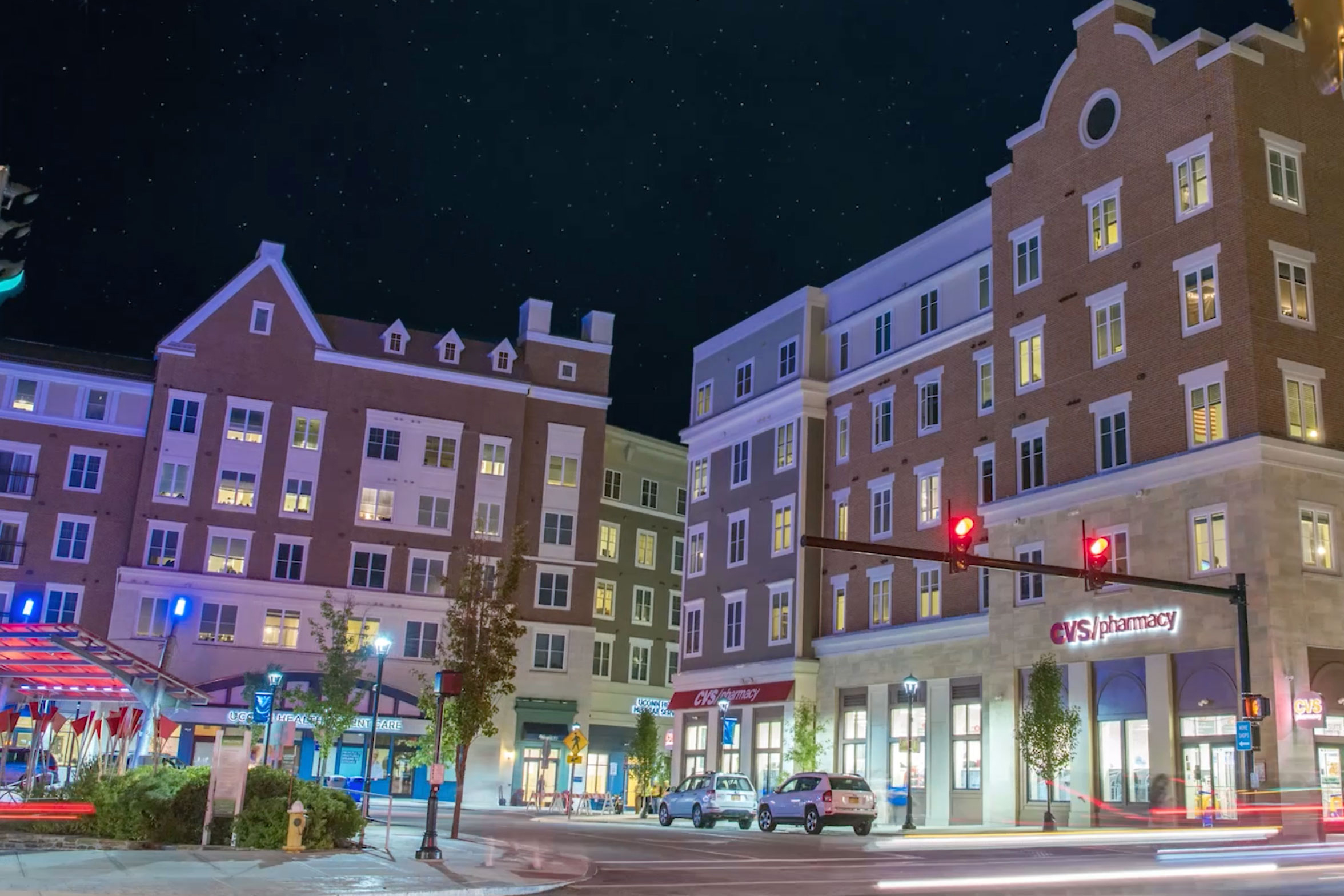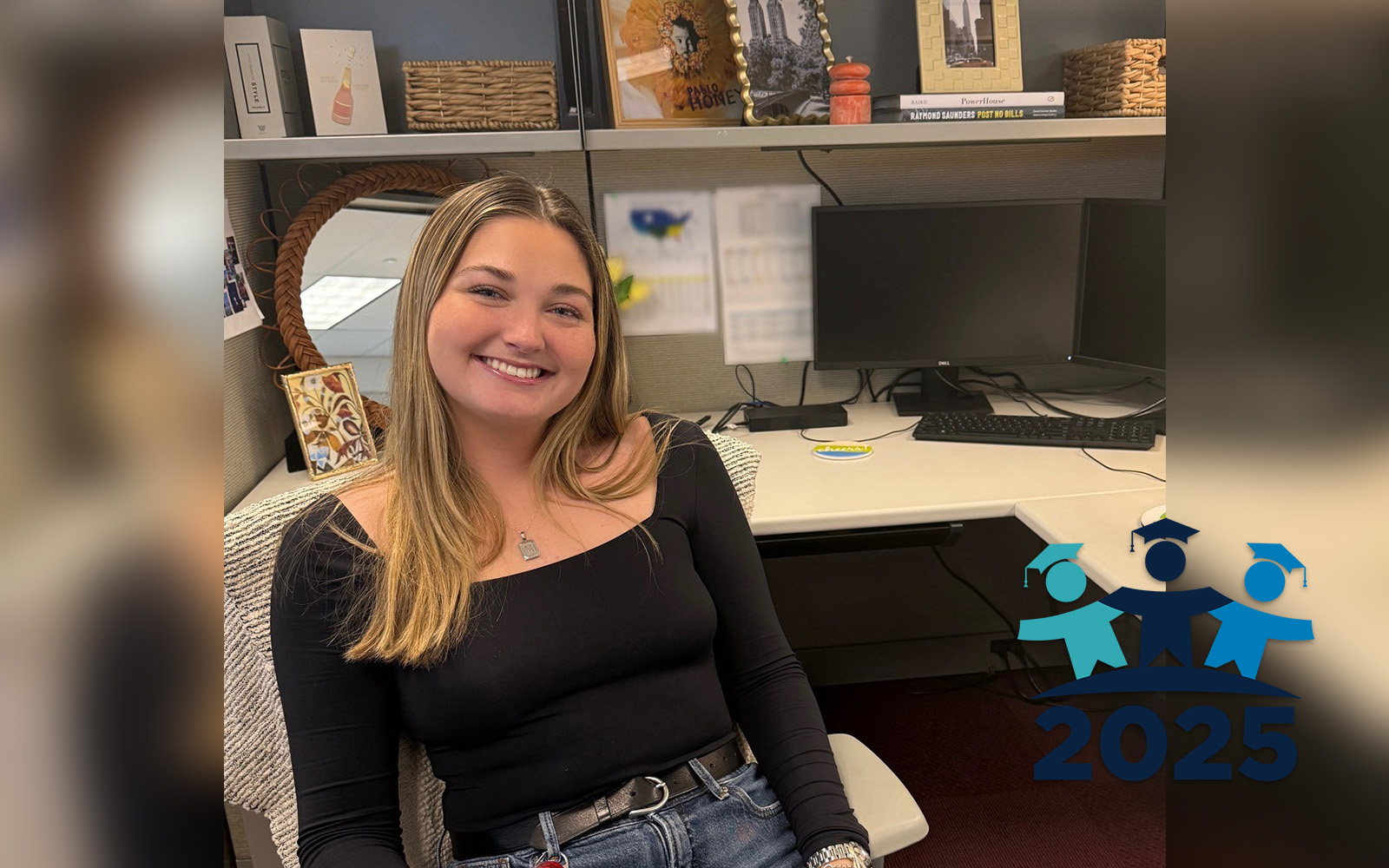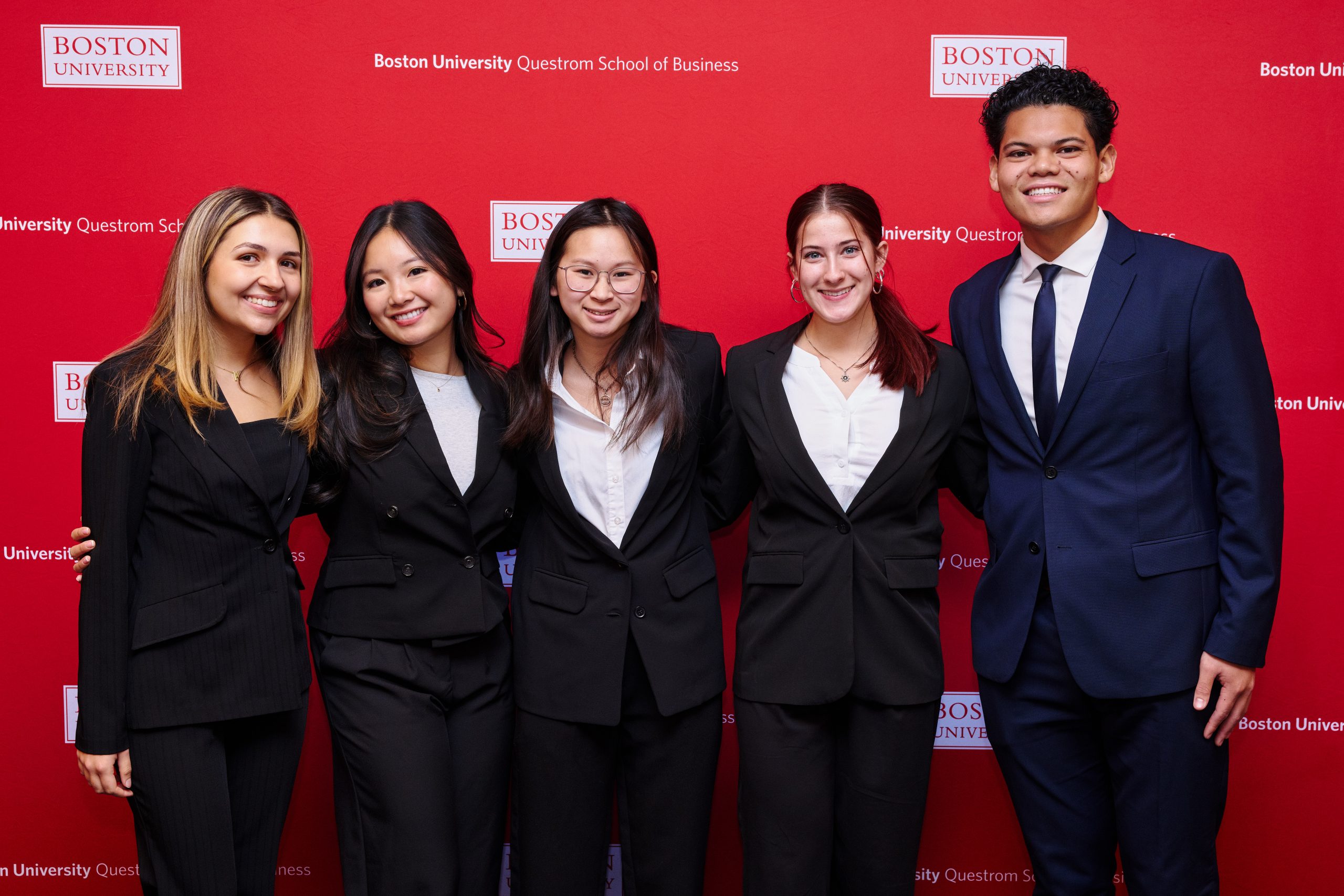We encounter surveys all the time.
On the bottom of a purchase receipt. While scrolling through social media feeds. On flyers with QR codes, and inside official-looking letters that show up in mailboxes.
But how often do you actually take one of those surveys?
What incentives would encourage you to take a survey?
And would it be enough just knowing that your feedback on a survey could help shape the direction of a community or even an entire town – like the one that you live in, or work in, each and every day?
A group of sophomores from the Innovation House Learning Community at UConn are hoping that a mix of incentives, outreach, enthusiasm, and good old-fashioned civic mindedness will encourage members of the UConn community to take a survey that will do just that: help shape the direction of the Connecticut town that UConn Storrs calls home.
‘Our Strategic Plan’
“Anyone who thinks people will respond to a survey vastly, vastly overestimates,” says Michael Stankov ’17 (CLAS) ’18 MS, an environmental planner and inland wetlands agent for the town of Mansfield. “People don’t like surveys. They don’t do them.”
But if you can effectively encourage people to take them, surveys still represent a good way to get valuable information and feedback from a large number of people.
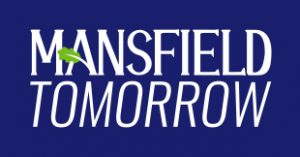
Which is why Stankov and his supervisor, Jennifer Kaufman – Mansfield’s director of planning and development – have spent a good portion of the past six months developing, promoting, and encouraging participation in a town-wide survey to help support the 2025 update to Mansfield’s plan of conservation and development.
“Every town in Connecticut needs to update their plan of conservation and development, and that has to be done every 10 years,” explains Kaufman. “In Mansfield, our plan of conservation and development also serves as our strategic plan. Not only does it include items such as land use, where we want to grow, and what we want to preserve, it also includes other things, like budgetary considerations for our town council.”
Mansfield’s last strategic plan, developed in 2015, is a wide-ranging 458-page document known as Mansfield Tomorrow, and it lays out priorities for the town that range from the amenities that influence people choosing to live in Mansfield to the economic and physical development of the community.
The 2025 plan isn’t meant to be a complete rewrite, but rather an update that reflects changes in priorities and strategies that will naturally occur over the course of a decade, Kaufman says. An ad hoc committee as well as three working groups have been active since last fall, garnering feedback from the Mansfield community to help contribute to the update.
“We have the town-wide survey that we’ve sent out,” Kaufman says. “We’ve done a mailing to everyone that has a mailbox in town. We’re having a public workshop. We’re going to the Senior Center for pop-up events. I’m going to the library’s story time, the library’s game night. We’re going to be doing door-to-door door hangers.
“So, we feel like we’ve got the town’s community engagement, the town’s people.”
But the engagement they haven’t really been able to get?
It’s from UConn.
‘Very Intentional’
In the fall of 2025, UConn Storrs will house an estimated 13,800 students, Kaufman explains, and under census guidelines, those students residing on campus at UConn are considered Mansfield residents.
“In addition, besides people who are living in on-campus housing, we have about 4,000 students who live in the community in apartments, in single-family homes, and in condos,” she says. “So, the UConn population, while they only live in our town for four years, they’re a key part of the population. And they’re not necessarily plugged in to come to a town meeting, or they may not be using our library, or coming to our Mansfield Community Center, or going to the Senior Center.”
And even beyond the students who live on and around the Storrs campus, there are thousands of additional members of the UConn community – including faculty and staff – who commute to Mansfield; who visit the downtown area; who enjoy Mansfield restaurants or frequent Mansfield businesses; or who make use of Mansfield’s parks, trails, and recreation services.
The town wants to hear from those people, too.
“It’s all too easy to fragment our lives into – ‘I live in a town and that’s the only town that I should have input in,’” says Stankov. “But we live in communities that are complex and that cross lots of towns, so we need to hear what people who don’t just live and pay taxes here want, because that helps us understand how to provide more services for more people.”
But while UConn represents more than half Mansfield’s population, engagement from UConn in the 2015 strategic planning process wasn’t what Kaufman and Stankov would hope, and they want to change that this time around.
“We’re trying to be very intentional about our outreach to the UConn population,” Kaufman says. “We need to kind of crack that nut of how we can reach out to the UConn community.”
“Because of our weak penetration of the UConn bubble in 2015, we’ve really doubled down on trying to make sure that we understand what folks at UConn are thinking of,” says Stankov.
But how do you get busy students – not to mention faculty and staff, who might not even live in town – to pay attention to and take a municipal survey?
That’s where 18 undergraduates from Innovation House are playing an important part.
‘What Students Think’
Innovation House is a multidisciplinary community that brings together entrepreneurial-minded students and offers mentorship opportunities and exposure to programs that help support entrepreneurship.
That multidisciplinary nature is what drew Alishia Thompson ’27 (SFA), a digital media and design student from Putnam, to the community.
“I wanted a mix of a bunch of different people from different majors and schools in the University and from all sorts of different backgrounds,” Thompson says.
Michael Bossi ’27 (BUS), a business management major from Bristol, was drawn to the community through an interest in innovation and entrepreneurship.
“I love thinking strategically about business and really just any kind of problem that you have to think critically to solve,” Bossi says. “That’s just always what’s been fun to me. That’s why I went into business management in the first place as well, and that led me to the Innovation House this past year.”
For Carter Gay ’27 (CLAS), a double major in mathematics and physics from Canton, Innovation House seemed to align with his interests.
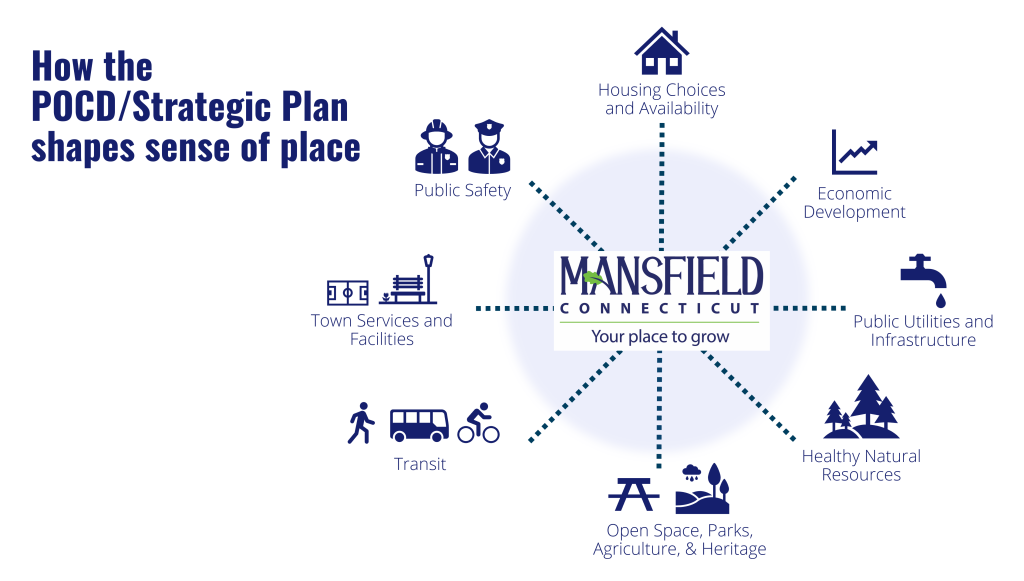
“You get to be part of a community of people, and they all live on the same floor,” Gay says. “I thought that was kind of cool. In the building where the housing is, there’s a maker’s space in the bottom, that’s pretty cool.”
Despite their difference in majors, the three students – and many of their fellow sophomores in Innovation House – have something in common beyond their interest in innovation.
None of them had ever really thought much about municipal planning.
Last year, the Werth Institute for Entrepreneurship and Innovation took over responsibility for the Innovation House Learning Community. Kathy Rocha, the institute’s associate director, and Katie Britt, it’s director of leadership development, co-teach a required course with the community’s sophomore class that’s focused on the design thinking process – ideation, creativity, innovation, and entrepreneurship.
“The plan for this semester was to come up with a project based in our area, in the Mansfield area, that the students could work on creatively to solve a problem,” says Rocha. “We didn’t know what the problem was, but it was a general idea.
“I was talking with David Ouimette, and I told him about this, and he asked me if I had ever met Jennifer Kaufman. And I hadn’t. He said you should reach out to her.”
So, she did.
“Kathy made contact with me at the beginning of the semester,” says Kaufman, “and she said, ‘Hey, I want to work on a project for the town.’ And we said, ‘This is great.’”
As the semester has progressed, Stankov has visited the class a few times, taking feedback from the students about how they thought the Mansfield Tomorrow survey might be improved, and learning about and helping them refine their plans for how to engage with other member of the UConn community encourage participation in the survey.
“The goal is to figure out what students think about the surrounding area, whether that be that there’s not enough stores, not enough shops, or there’s not enough housing, there’s not enough public walkways, that sort of thing,” says Gay. “How we can develop the area better, not only to suit the needs of everybody, but really to help UConn students?”
‘Our Whole Story’
The students, who divided themselves into teams focused on each different UConn demographic – students, faculty, and staff – have developed creative plans utilizing their diverse experiences and skills in order to engage the UConn community on Mansfield’s behalf.
With the ideation phase of their project complete, they’ll soon be shifting into action, putting flyers around campus and asking their own professors and the University staff they work with to complete the survey, which is online and only takes five-to-10 minutes, before working on broader outreach to faculty and staff.
In addition to the gift-card giveaways that the town has for anyone who completes the survey, some student-only incentives will be on offer as well, including a UConn jersey, a basketball signed by Coach Auriemma, and gift cards to Barnes & Noble.
And, they’ll be out on campus on April 1 and 2 offering free cookies to any student who takes the survey.
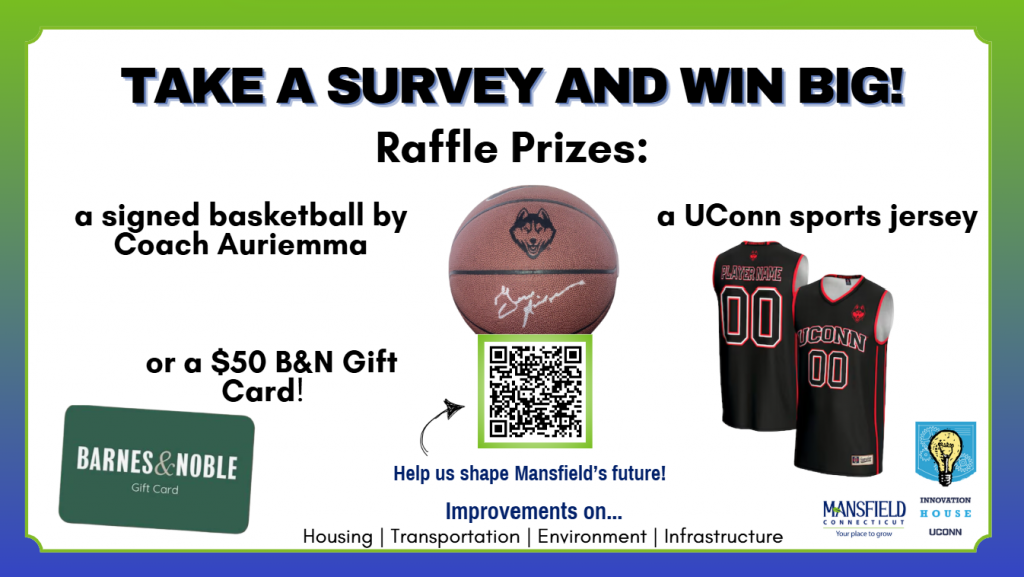
“We all agreed that, if there’s one thing we know that can get college students to participate in things, it’s free food,” Thompson says.
Every response, says Bossi, adds to crucial data that the town needs to help guide its decision-making.
“Our goal is to help the town of Mansfield, really, and more measurable in our class is to get as many responses as possible,” Bossi says. “My goal is to shoot for the stars with the amount of responses we can get – I want thousands of responses on that survey, from every demographic.”
Thousands of responses might be a lofty goal, says Stankov – hundreds might be more realistic. For Kaufman, their overarching aim is to strike a balance between understanding the needs of the UConn community and building a plan that addresses the whole of Mansfield’s population.
“We value the UConn community – we, personally, have great relationships with people at UConn, like Nathan Fuerst, John Armstrong, and Phil Hunt – and I think the town and the University, over the past few years, have really done a great job in working together,” Kaufman says. “We know that UConn students make up over half of our residents, and so we are, again, being intentional so that we’ll be able to tell that as just a part of our whole story.”
‘Such An Impact’
Though it’s unlikely that most of the Innovation House students – including Bossi, Gay, and Thompson – will go on to pursue a career in municipal planning, the learning opportunities from this project go far beyond any future plans, explains Rocha.
“It’s about creative thinking,” she says. “They’re working on collaboration with each other, as well as with the town of Mansfield. Adaptability – they’ve had to be very flexible in what they’re doing. And then finally, it’s the execution, the project management, and that’s the one that students really don’t often get a chance to do.
“They get into all of this stuff, and then putting together the plan and seeing the plan through –that’s a big one.”
That aspect of the project hasn’t been lost on Thompson, the digital media and design major.
“While I’m not necessarily going to be a municipal planner in my future, there’s still a lot of skills and aspects of this that are really critical for a job in the DMD department, especially in the animation field,” Thompson says. “Animation is all about collaboration, communication, and teamwork and, in some cases, leadership as well. This project and this program, that we’re trying to – it is literally asking for all of those skills.”
For Gay, the math and physics major, and for Bossi, the business management major, participating in the project has given them a new empathy for the work that town officials are doing and a new appreciation for the role that they get to play in the process.
“I think it’s really meaningful, because it’s something real,” Gay says. “In a lot of classes, you’ll do something like this, and it’ll be a ‘mock’ something, not real. But this is legitimate, real-world. And the town really just wants information on how they can improve and help make things better.”
“I can even see myself skipping out on a survey like this,” says Bossi. “But I really, truly do mean – from the bottom of my heart – that this whole project is done with very good intentions. We aren’t seeking a financial gain; we’re just seeking to help the place that houses all of our students. Mansfield houses UConn, and taking just five minutes or less to fill out a survey can make such an impact.”
All members of the UConn Storrs community – students, faculty, and staff, regardless of town of residence – are encouraged to contribute to Mansfield’s strategic planning by completing the Mansfield Tomorrow survey at MansfieldTomorrow.org.
UConn students are invited to join the Innovation House class on Fairfield Way on April 1, 2025, from 11:00 a.m. to 2:00 p.m., and in the Student Union on April 2, 2025, from 11:00 a.m. to 2:00 p.m., to take the Mansfield Tomorrow survey, get a free cookie, and be entered for a chance to win a raffle prize.
